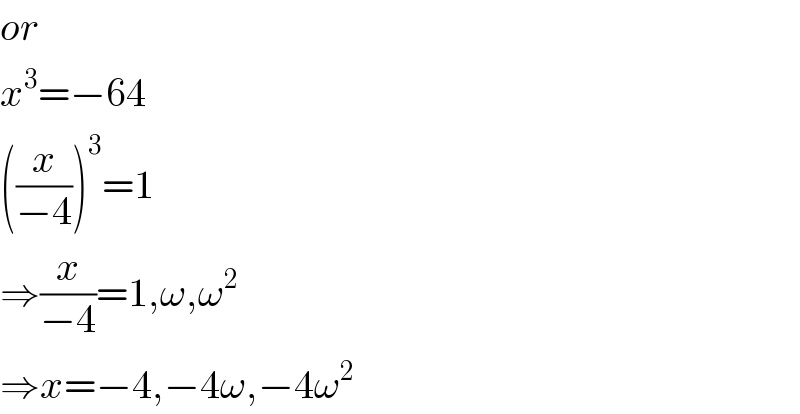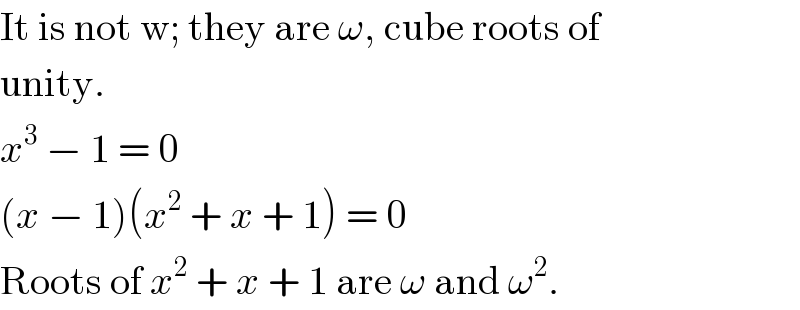
Question and Answers Forum
Question Number 14587 by tawa tawa last updated on 02/Jun/17

Answered by mrW1 last updated on 03/Jun/17

Commented by RasheedSoomro last updated on 04/Jun/17

Commented by mrW1 last updated on 03/Jun/17

Commented by tawa tawa last updated on 04/Jun/17

Commented by tawa tawa last updated on 04/Jun/17

Commented by Tinkutara last updated on 04/Jun/17

Commented by tawa tawa last updated on 04/Jun/17

Commented by mrW1 last updated on 04/Jun/17

Commented by tawa tawa last updated on 04/Jun/17

Commented by tawa tawa last updated on 04/Jun/17

Commented by arnabpapu550@gmail.com last updated on 13/Jun/17
![To dear tawa. To find the qube root of 1 put x^3 =1 ∴ x^3 −1=0 or, (x−1)(x^2 +x+1)=0 ∴ (x−1)=0 ⇒x=1 or, (x^2 +x+1)=0 ∴ x=((−1±(√(1−4.1.1 )))/2)=((−1±i(√3))/2) It is denoted by ω and ω^2 . Where ω=((−1+i(√3))/2) ω^2 =((−1−i(√3))/2) [You may varify it] Properties: (a) ω^3 =1 ∴ ω^4 =ω^3 .ω=ω (b) 1+ω+ω^2 =0](Q15729.png)
